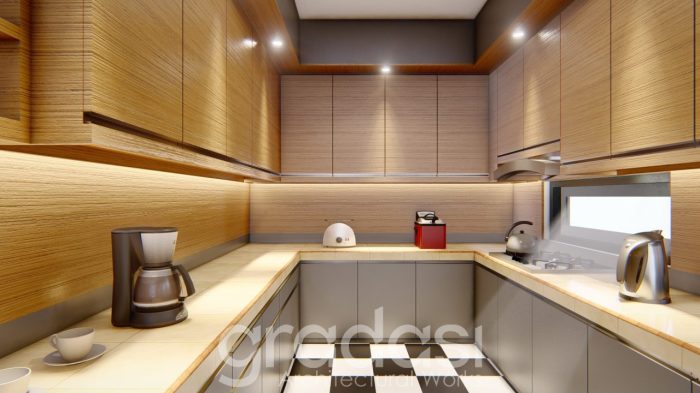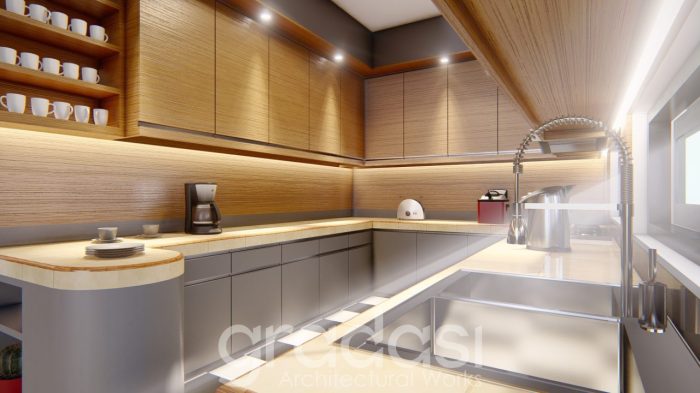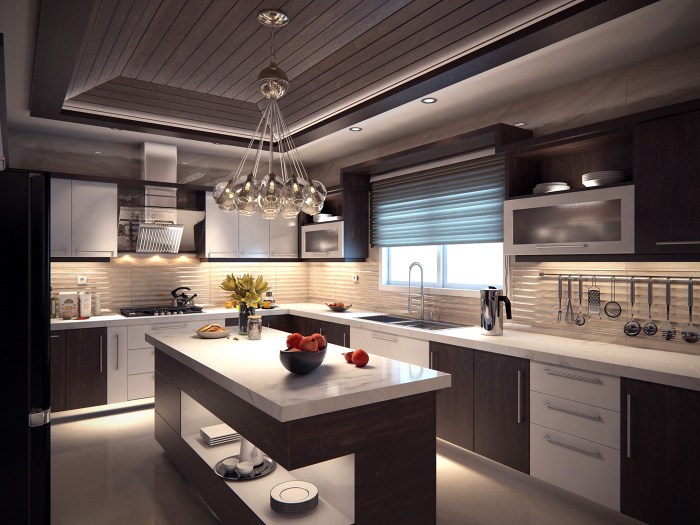Enhancing Your Home: Kitchen Interior Design Guide
Step into the heart of your home with our comprehensive guide to kitchen interior design. Discover how the perfect blend of functionality and aesthetics can transform your cooking space into a sanctuary of style and efficiency. From popular styles to space-saving tips, let's explore the world of kitchen design together.
Importance of Kitchen Interior Design
When it comes to home decor, the kitchen interior design plays a crucial role in creating a functional and aesthetically pleasing space. A well-designed kitchen not only enhances the overall look of the house but also improves the efficiency and comfort of daily activities.
Enhancing Functionality
A well-planned kitchen layout can optimize the workflow, making meal preparation and cooking tasks more convenient and enjoyable. Proper placement of appliances, storage solutions, and work areas can streamline the cooking process and save time.
Aesthetics and Atmosphere
The design elements such as color schemes, lighting fixtures, and materials used in the kitchen can significantly impact the overall ambiance of the space. A harmonious and visually appealing kitchen design can create a welcoming and cozy atmosphere for family gatherings and social interactions.
Impact on Home Value
The quality of the kitchen design can have a direct influence on the overall value of the property. A modern and well-designed kitchen is often a key selling point for prospective buyers, increasing the market value of the home. Investing in a stylish and functional kitchen design can offer a high return on investment in the long run.
Elements of Kitchen Interior Design

When it comes to creating a functional and aesthetically pleasing kitchen, various elements play a crucial role in the overall design. From the layout to the color scheme, lighting, and materials used, each component contributes to the look and feel of the space.
Layout
The layout of a kitchen is essential for ensuring smooth workflow and maximizing space utilization. The placement of appliances, countertops, and cabinets should be carefully planned to create an efficient and ergonomic design.
Color Scheme
The color scheme sets the tone for the kitchen and can greatly impact its overall ambiance. Whether you opt for a bold and vibrant palette or a soft and neutral one, choosing the right colors can enhance the look of your kitchen.
Lighting
Proper lighting is key to creating a functional and inviting kitchen environment. Task lighting, ambient lighting, and accent lighting all play a role in illuminating the space and highlighting key areas such as the countertop and cooking area.
Materials
The materials used in the kitchen, from countertops to flooring, can greatly influence the design style and durability of the space. Whether you prefer natural stone, wood, or sleek stainless steel, selecting the right materials is essential for achieving the desired look.
Appliances, Cabinets, Countertops, and Flooring
- Appliances: The choice of appliances not only impacts the functionality of the kitchen but also contributes to the overall design aesthetic. Integrated appliances can create a seamless look, while statement pieces can add a touch of personality.
- Cabinets: Cabinets are not only essential for storage but also play a significant role in the visual appeal of the kitchen. From sleek modern designs to classic shaker styles, the choice of cabinets can define the overall look of the space.
- Countertops: Countertops are not only a functional element but also a design feature in the kitchen. Whether you opt for granite, quartz, or marble, the choice of countertop material can enhance the style of the space.
- Flooring: The flooring in the kitchen should be durable, easy to clean, and complement the overall design. From hardwood to tile, selecting the right flooring material can tie the design elements together.
Creating a Cohesive Look
Integrating these elements effectively is key to creating a cohesive look in your kitchen. By harmonizing the layout, color scheme, lighting, materials, appliances, cabinets, countertops, and flooring, you can achieve a balanced and visually appealing space that reflects your personal style.
Popular Styles in Kitchen Interior Design

When it comes to kitchen interior design, there are several popular styles to choose from. Each style has its unique features, colors, and materials that can significantly impact the overall look and feel of your kitchen. Let's explore some of the most common styles and how to choose one that complements your home design.
Modern Style
- Features: Clean lines, sleek surfaces, and minimal clutter.
- Colors: Neutral tones like white, black, and gray, often with pops of bold colors.
- Materials: Stainless steel, glass, and concrete are commonly used.
Traditional Style
- Features: Ornate details, intricate cabinetry, and classic elements.
- Colors: Warm and inviting colors like cream, beige, and brown.
- Materials: Wood, marble, and ceramic are popular choices.
Farmhouse Style
- Features: Rustic elements, reclaimed wood, and vintage accents.
- Colors: Soft, muted colors like white, pastels, and earth tones.
- Materials: Wood, stone, and wrought iron are key materials in farmhouse kitchens.
Minimalist Style
- Features: Simple, clean design with a focus on functionality.
- Colors: Monochromatic color schemes with a few accent colors.
- Materials: Sleek surfaces, stainless steel, and glass are commonly used.
Choosing the right style for your kitchen depends on your personal taste and the overall design of your home. Consider the existing aesthetic of your living spaces and choose a kitchen style that complements it seamlessly. Whether you prefer a modern, traditional, farmhouse, or minimalist look, there are plenty of options to create a kitchen that suits your lifestyle and design preferences.
Maximizing Space in Kitchen Design
Creating an efficient and functional kitchen design in a limited space requires smart strategies and creative solutions. Maximizing space is crucial to ensure that your kitchen not only looks great but also serves its purpose effectively.
Optimizing Storage in a Small Kitchen
When dealing with a small kitchen, storage optimization is key to keeping the space organized and clutter-free. Here are some strategies to make the most out of limited storage:
- Utilize vertical space by installing shelves or hanging racks to store cookware, utensils, and other kitchen essentials.
- Consider adding pull-out drawers or cabinets to maximize storage capacity and make items more accessible.
- Use under-cabinet storage solutions such as hooks or magnetic strips to keep tools within reach without taking up counter space.
Importance of Organization and Decluttering
Organization and decluttering play a crucial role in creating a spacious feel even in a small kitchen. Here are some tips to maintain an organized kitchen:
- Regularly declutter unused or unnecessary items to free up space and create a visually appealing environment.
- Group similar items together and use storage containers or baskets to keep things organized and easy to find.
- Label shelves and containers to ensure everything has its designated place, reducing clutter and confusion.
Creative Use of Corners, Vertical Space, and Multifunctional Furniture
Maximizing space in a kitchen also involves thinking creatively about how to utilize every nook and cranny effectively. Here are some creative ideas to make the most of your kitchen space:
- Install corner cabinets or shelves to utilize awkward corner spaces for storage without wasting valuable square footage.
- Use vertical space by hanging pots and pans or installing tall cabinets to take advantage of the height of the room.
- Opt for multifunctional furniture such as kitchen islands with built-in storage or pull-out countertops to maximize workspace and storage capacity.
Trends in Kitchen Interior Design
Keeping up with the latest trends in kitchen interior design can help you create a modern and functional space that reflects your style. From smart kitchens to sustainable materials, there are various trends shaping the way we design our kitchens today.
Smart Kitchens
Smart kitchens are becoming increasingly popular, with technology playing a significant role in kitchen design innovations. From smart appliances that can be controlled remotely to voice-activated assistants that can help you with recipes, incorporating smart elements into your kitchen can make your life easier and more efficient.
Sustainable Materials
Using sustainable materials in kitchen design is not only environmentally friendly but also adds a unique touch to your space. From reclaimed wood to recycled glass countertops, there are plenty of options to choose from when it comes to creating a sustainable kitchen that is both stylish and eco-friendly.
Open Shelving
Open shelving is a trend that has been gaining popularity in recent years, as it allows you to showcase your favorite dishes and cookware while also making your kitchen feel more spacious and open. Incorporating open shelving can give your kitchen a modern and airy look, perfect for those who love a minimalist aesthetic.
Incorporating Trends with Timeless Appeal
When incorporating trends into your kitchen design, it's essential to strike a balance between modern elements and timeless appeal. Opt for classic colors and materials for your kitchen cabinets and countertops, while adding trendy accents like smart appliances or open shelving to keep your space current without sacrificing its longevity.
Lighting and Color Schemes in Kitchen Design
Proper lighting and color schemes play a crucial role in creating a functional and inviting kitchen space. The right combination can enhance the overall ambiance and functionality of the kitchen.
Significance of Proper Lighting
- Good lighting is essential for performing tasks such as cooking, chopping, and cleaning effectively.
- Proper lighting can also highlight key design elements in the kitchen, such as countertops, backsplashes, and cabinets.
- Well-placed lighting fixtures can create a welcoming atmosphere for family gatherings and meal prep.
Impact of Different Color Schemes
- Light colors like white or pastels can make a small kitchen feel more spacious and airy.
- Dark colors like navy blue or charcoal can add drama and sophistication to a larger kitchen.
- Warm colors like yellow or orange can create a cozy and inviting atmosphere, perfect for family meals.
Tips for Choosing Lighting Fixtures and Colors
- Consider a mix of overhead lighting, under cabinet lighting, and task lighting to create a well-lit kitchen.
- Opt for LED lights for energy efficiency and bright illumination.
- Choose lighting fixtures that complement the overall style of your kitchen, whether it's modern, traditional, or farmhouse.
- When selecting colors, think about the natural light in your kitchen and how different shades will interact with it throughout the day.
Last Recap

As we conclude our journey through the realm of kitchen interior design, remember that a well-designed kitchen is more than just a place to cook—it's a reflection of your personal style and a hub of daily activities. Embrace the power of thoughtful design choices and watch as your kitchen becomes the true heart of your home.
Clarifying Questions
How does kitchen interior design impact home value?
Kitchen interior design plays a significant role in increasing the overall value of a home by enhancing its aesthetic appeal and functionality.
What are some tips for maximizing space in a small kitchen?
Optimize storage with vertical shelving, utilize corners efficiently, and invest in multifunctional furniture to make the most of limited space.
How can I incorporate current trends in kitchen design without losing a timeless appeal?
Integrate trendy elements like smart appliances or sustainable materials in small doses, focusing on classic design fundamentals for a timeless look.